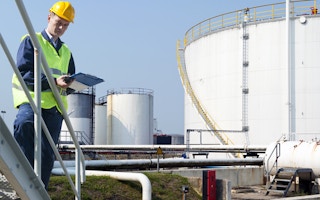In early 2013, the Singapore government introduced the Energy Conservation Act (ECA) to improve the energy performance of large energy users in the industry sector. This was part of a larger goal to help industries become more competitive globally and to aid Singapore in achieving its target of a 35 per cent improvement in energy intensity by 2030.
To continue reading, subscribe to Eco‑Business.
There's something for everyone. We offer a range of subscription plans.
- Access our stories and receive our Insights Weekly newsletter with the free EB Member plan.
- Unlock unlimited access to our content and archive with EB Circle.
- Publish your content with EB Premium.
The ECA essentially requires companies consuming more than 15GWh of energy annually to implement a three-pronged mandate – appoint an energy manager, monitor and report energy usage and greenhouse gas emissions, and submit energy efficiency plans.
Forming the cornerstone of your energy efficiency plan
The most challenging of the three actions may well be the formulation of the energy efficiency plans. How and where does one start?
At Schneider Electric, we believe that energy auditing is the first step to forming the basis of that plan. An energy audit reveals inefficiencies in operations which can be reduced or eliminated. This helps companies form their strategies and tactics for optimising energy usage.
Yet to ensure long-term energy efficiency, one mustn’t view energy auditing as a one-off process to be conducted just before formulating the plan. It should be a continuous wave that keeps on refining energy usage throughout the company’s life cycle.
Now let us take a look at how to put together a comprehensive energy management plan that promotes ongoing energy auditing and which drives continuous energy efficiency improvement. The following are key aspects it should include:
1. Measuring energy usage
A comprehensive energy management plan should consist of an extensive energy analysis or audit, since this is key to identifying improvement opportunities. This analysis entails collecting data from major energy consumers within a facility, examining energy usage patterns and demands, and evaluating its impact on total energy consumption. Installing power metering and monitoring is also important to track and provide a baseline for energy usage.
2. Fixing the basics
In the wake of an energy audit or similar study, industrial facility management should take the typical tactic of fixing the basics, such as implementing passive energy efficiency measures like installing high-efficiency lighting, HVAC systems, and motors and capacitors. A more efficient capacitor, for example, improves the power factor or the ratio of the real power flowing to the load. The higher the power factor, the more efficient the system is.
3. Automation
Installing active energy management measures promotes ongoing energy efficiency improvements and helps maintain and improve energy and cost savings over time. For example, measures like schedule-based lighting control and occupancy sensors automatically turn lights on only when they are needed, while HVAC control regulates heating and cooling at optimal levels, which can change frequently.
4. Monitoring and controlling
Managing key energy demands and modifying employee behaviour drive continuous improvement through information, training and management review. It also helps ensure that initial energy and cost savings don’t erode over time. Power metre installations, monitoring services, energy efficiency analysis, energy bill verification and an enterprise energy management (EEM) system, together with regular energy audits, all can help achieve this end.
Implementing your plan and keeping it on track is like running a marathon
Now that you’ve put together a robust energy efficiency plan that emphasises continuous energy auditing, how do you implement it and keep it on track for the long haul? Well, it’s not very different from running a marathon, one of Singapore’s favourite pastimes. Let’s see.
“
Human behaviour plays an enormous role in energy consumption – training employees on the importance of energy efficiency for the company and our world, and practicing it in the workplace, has a direct impact on hitting energy targets
- Get a coach
Coaches are essential for keeping you on track and helping you through the rough spots, whether you’re a runner or an organisation.
A marathon runner needs a skilled coach – a trusted marathon expert. The coach ensures daily workouts are appropriate; runs are at the right length and pace; diet is appropriate; clothing is right; and, mental preparedness is maintained.
An organisation needs a coach too – a trusted energy management services (EMS) expert. Your EMS coach will conduct energy sourcing, budget development, rate and tariff analysis, demand response, and risk management. Your EMS partner also ensures that your energy plan is followed, throughout the life cycle of your company.
This coaching – in both instances – is sure to be a huge catalyst to a plan’s success.
- Train, train, train!
Training is non-negotiable for marathon runners to successfully (and safely) complete the race. For an organisation, training its people on energy efficiency is just as important. Training also comes in the form of auditing.
A marathon runner must train in several ways – not just the act of running. Training also includes learning how to breathe, how to stride, how/when/what to eat, what to wear, when to rest, how to perform in different weather conditions, and so on. All of this training helps a runner save energy.
An organisation must train too. Human behaviour plays an enormous role in energy consumption – training employees on the importance of energy efficiency for the company and our world, and practicing it in the workplace, has a direct impact on hitting energy targets. To support this training, energy audits should be conducted regularly as these will provide proof points or data on items such as energy consumption per capita, operating costs per capita and environmental impact to employees, as well as serve as important information gathering for the energy or facility manager.
Training is the path to sustaining desired results. For marathon runners, this means improving their time in future races. For an organisation, this means improving ROI year after year.
- Continually improve
Once you’ve implemented your energy savings plan, the next challenge is to optimise it.
A marathon runner must continually train and optimise his or her performance each time he or she trains – run a mile longer, eat less fat, rest longer to allow the body to heal, and more.
Optimising performance isn’t possible without saving energy at every step. An organisation must optimise its infrastructure in order to do so. Regular maintenance, efficiency upgrades, waste energy re-use, HVAC retrofits, and renewable energy solutions allow companies to minimise energy consumption, maximise energy efficiency, and optimise energy savings.
To sum up, the key success factor of any effective energy efficiency strategy is continuous energy auditing – it is the heart rate monitor that enables energy managers to continuously keep a finger on the pulse of how one’s energy usage is, enabling them to make adjustments to the efficiency plan to best manage and optimise energy usage.









